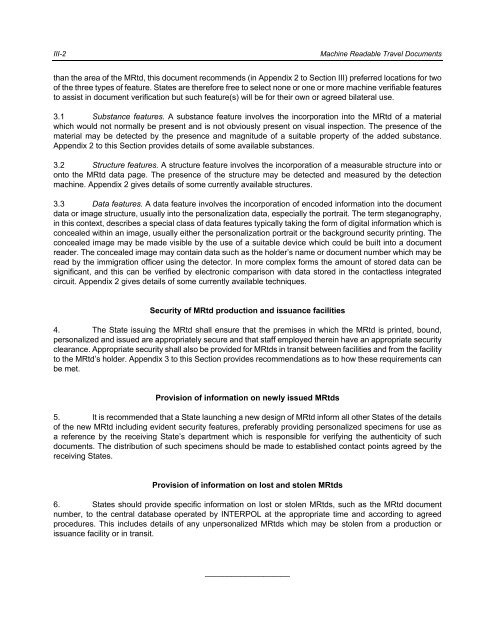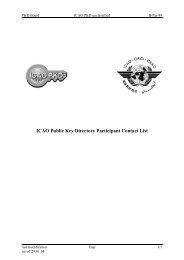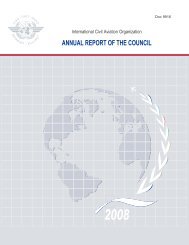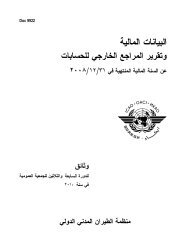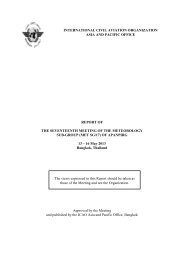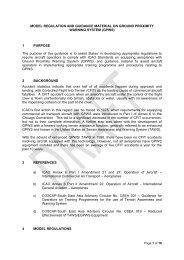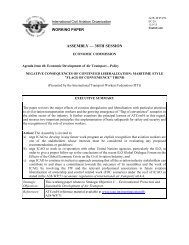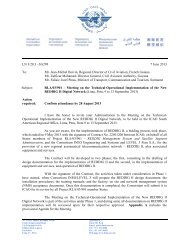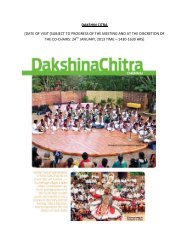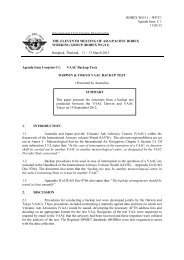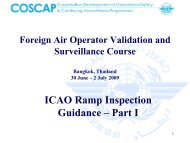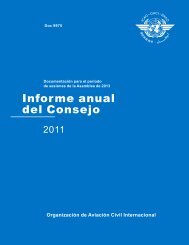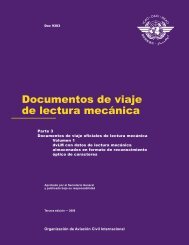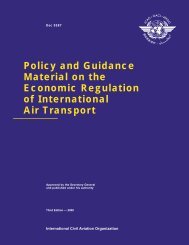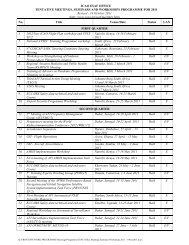Machine Readable Travel Documents - ICAO
Machine Readable Travel Documents - ICAO
Machine Readable Travel Documents - ICAO
Create successful ePaper yourself
Turn your PDF publications into a flip-book with our unique Google optimized e-Paper software.
III-2 <strong>Machine</strong> <strong>Readable</strong> <strong>Travel</strong> <strong>Documents</strong><br />
than the area of the MRtd, this document recommends (in Appendix 2 to Section III) preferred locations for two<br />
of the three types of feature. States are therefore free to select none or one or more machine verifiable features<br />
to assist in document verification but such feature(s) will be for their own or agreed bilateral use.<br />
3.1 Substance features. A substance feature involves the incorporation into the MRtd of a material<br />
which would not normally be present and is not obviously present on visual inspection. The presence of the<br />
material may be detected by the presence and magnitude of a suitable property of the added substance.<br />
Appendix 2 to this Section provides details of some available substances.<br />
3.2 Structure features. A structure feature involves the incorporation of a measurable structure into or<br />
onto the MRtd data page. The presence of the structure may be detected and measured by the detection<br />
machine. Appendix 2 gives details of some currently available structures.<br />
3.3 Data features. A data feature involves the incorporation of encoded information into the document<br />
data or image structure, usually into the personalization data, especially the portrait. The term steganography,<br />
in this context, describes a special class of data features typically taking the form of digital information which is<br />
concealed within an image, usually either the personalization portrait or the background security printing. The<br />
concealed image may be made visible by the use of a suitable device which could be built into a document<br />
reader. The concealed image may contain data such as the holder’s name or document number which may be<br />
read by the immigration officer using the detector. In more complex forms the amount of stored data can be<br />
significant, and this can be verified by electronic comparison with data stored in the contactless integrated<br />
circuit. Appendix 2 gives details of some currently available techniques.<br />
Security of MRtd production and issuance facilities<br />
4. The State issuing the MRtd shall ensure that the premises in which the MRtd is printed, bound,<br />
personalized and issued are appropriately secure and that staff employed therein have an appropriate security<br />
clearance. Appropriate security shall also be provided for MRtds in transit between facilities and from the facility<br />
to the MRtd’s holder. Appendix 3 to this Section provides recommendations as to how these requirements can<br />
be met.<br />
Provision of information on newly issued MRtds<br />
5. It is recommended that a State launching a new design of MRtd inform all other States of the details<br />
of the new MRtd including evident security features, preferably providing personalized specimens for use as<br />
a reference by the receiving State’s department which is responsible for verifying the authenticity of such<br />
documents. The distribution of such specimens should be made to established contact points agreed by the<br />
receiving States.<br />
Provision of information on lost and stolen MRtds<br />
6. States should provide specific information on lost or stolen MRtds, such as the MRtd document<br />
number, to the central database operated by INTERPOL at the appropriate time and according to agreed<br />
procedures. This includes details of any unpersonalized MRtds which may be stolen from a production or<br />
issuance facility or in transit.<br />
___________________


